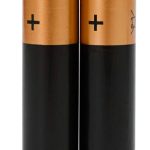Riding a KTM 1290 Super Adventure is an experience that resonates with outdoor enthusiasts and bike lovers. It’s a blend of power and precision, a road warrior that assures a great ride. However, like every mechanical system, this bike requires regular service to maintain its performance.
One of the critical components that need regular service is the hydraulic clutch fluid. But how frequently should you change it? In this comprehensive guide, we will delve into the nitty-gritty of hydraulic clutch fluid change frequency in a KTM 1290 Super Adventure.
In the same genre : How can I optimize the fuel map settings on a Yamaha YZF-R6 for performance and efficiency?
Understanding The Hydraulic Clutch System
Before we delve into the frequency of changing the hydraulic clutch fluid, it’s important to understand the role of the hydraulic clutch system in your KTM bike.
The hydraulic clutch system is an integral part of your bike’s operation, as it is responsible for transmitting power from your bike’s engine to the gearbox. It uses fluid to transfer this power, providing a smoother ride and better control over your bike.
This might interest you : How do I properly secure a cargo net on a Yamaha FJR1300 to avoid paint damage?
This fluid is vital to the overall performance of your bike and needs to be in optimal condition at all times. Over time, the hydraulic clutch fluid can suffer from degradation due to wear and tear, heat, and contamination. This can affect your bike’s performance, making the ride less smooth and decreasing your control over the bike. Therefore, changing this fluid is a crucial part of maintaining your KTM 1290 Super Adventure.
When To Change Your Hydraulic Clutch Fluid
In general, most manufacturers, including KTM, recommend changing the hydraulic clutch fluid every two years. However, this can vary depending on several factors, including your riding style, the conditions in which you ride, and the overall maintenance of your bike.
For instance, if you frequently ride on rough terrains or in high-temperature conditions, the hydraulic fluid can degrade faster. Similarly, if you ride your bike aggressively, the clutch can get more wear and tear, necessitating a more frequent fluid change.
In addition to the recommended two-year schedule, you should also change the hydraulic clutch fluid any time you notice a change in your bike’s performance. Symptoms such as a stiff or loose clutch, difficulty in changing gears, or a decrease in your bike’s acceleration could indicate a need for a fluid change.
Changing The Hydraulic Clutch Fluid
Knowing when to change your hydraulic clutch fluid is only half the battle; you also need to know how to do it correctly.
First, gather the necessary tools and materials. You will need a hydraulic fluid that is compatible with your KTM 1290 Super Adventure. It’s also recommended to have a service kit on hand. This should include a new clutch master cylinder seal, a bleeder syringe, and brake cleaner.
Start by removing the old fluid from the hydraulic clutch system. To do this, use the bleeder syringe to draw out the old fluid from the master cylinder. Once this is done, clean the master cylinder with the brake cleaner to ensure that no old fluid or contaminants remain.
After cleaning, you can now add the new hydraulic fluid. Make sure to fill the master cylinder to the proper level, then reassemble the clutch system.
Comparing KTM 1290 Super Adventure’s Hydraulic Clutch Fluid Change with BMW’s
It’s worth noting how KTM’s recommendation for hydraulic clutch fluid change in the 1290 Super Adventure compares to other bikes, like those from BMW.
BMW, like KTM, recommends changing the hydraulic clutch fluid every two years. However, the frequency can change depending on the bike’s use and the rider’s style. For instance, a BMW bike that is used for regular commuting in city traffic may require more frequent fluid changes than a KTM 1290 Super Adventure that is used for leisurely rides on the open road.
In conclusion, maintaining the hydraulic clutch system in your KTM 1290 Super Adventure is crucial for ensuring a smooth and enjoyable ride. Regularly changing the hydraulic clutch fluid, as per the manufacturer’s recommendation and depending on your riding conditions and style, can help you avoid potential issues and maximize your bike’s performance.
While the focus of this article has been on the KTM 1290 Super Adventure, the principles and guidelines discussed apply to all bikes with a hydraulic clutch system. So, whether you ride a KTM, a BMW, or any other bike, remember to give your hydraulic clutch the care and attention it deserves.
Distinguishing Between Hydraulic Clutch Fluid and Brake Fluid
The hydraulic clutch system in your KTM Super Adventure is not to be confused with the brake system, even though both involve the use of fluid to function optimally.
The hydraulic clutch system, as previously explained, is responsible for transmitting power from the engine to the gearbox. It uses hydraulic clutch fluid, often a type of mineral oil, to accomplish this. Its function is to ensure a smooth ride and effective control over your KTM Super Adventure.
On the other hand, the brake system is responsible for slowing down or stopping your bike when needed. The brake fluid in this system needs to be highly resistant to heat, as it is exposed to high temperatures during braking.
It is crucial that these two fluids are not mixed up during your maintenance schedule. Each has a specific role and properties that make it suitable for its purpose. Mixing these fluids could lead to a compromised braking system or clutch system, which could lead to poor performance or even damage to your KTM Super Adventure.
Also, it’s important to note that while both fluids need regular changing, their service intervals may vary. As previously mentioned, KTM recommends a hydraulic clutch fluid change every two years. For brake fluid, however, the change could be more frequent, especially if your bike is often exposed to severe riding conditions.
Observing the KTM 1290 Super Adventure Maintenance Schedule
To keep your KTM 1290 Super Adventure in top shape, it is important to stick to the recommended maintenance schedule. This includes regular checks on various components, including the hydraulic clutch, brake system, chain tension, oil change, and more.
A regular maintenance schedule ensures that your bike performs optimally and extends its lifespan. Each component, whether it’s the hydraulic clutch or the chain tension, plays a crucial role in the overall performance of your bike. So, neglecting one can affect the condition of others and the bike as a whole.
For the hydraulic clutch fluid, as previously mentioned, the recommended change is every two years. However, if you frequently engage in aggressive riding or ride under harsh conditions, you may need to change the fluid more frequently.
In addition to the hydraulic clutch, other crucial components to check include the chain tension and the brake fluid. A loose or overly tight chain can affect your bike’s driving efficiency and pose a safety risk. Regarding the brake fluid, it should be checked regularly for any signs of contamination or degradation, as it is critical for your safety while riding.
Conclusion
Riding a KTM 1290 Super Adventure is an exhilarating experience, but it also comes with a responsibility to maintain the bike’s performance. The hydraulic clutch fluid is one such component that requires regular attention and service to keep your bike running smoothly.
But it’s not just about changing this fluid. It’s about understanding why it’s needed, when and how to change it, and how it compares to other fluids like brake fluid. All these elements are part of a comprehensive maintenance schedule that every Super Adventure KTM owner should adhere to.
Remember, whether it’s the hydraulic clutch fluid, brake fluid, chain tension, or any other component, each plays a significant role in your bike’s performance. Regular checks and timely service can help you avoid potential issues, maximize performance, and ensure a safe, enjoyable riding experience.
So, whether you’re a seasoned rider or a newbie, you now know when and how to change your hydraulic clutch fluid. But don’t stop there. Keep learning, keep exploring, and ride your KTM 1290 Super Adventure with pride and confidence!











